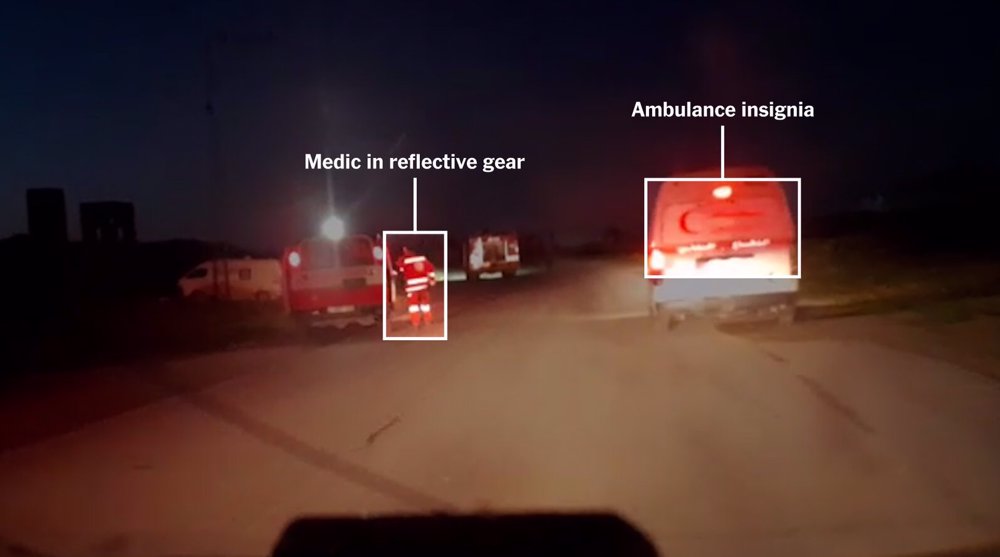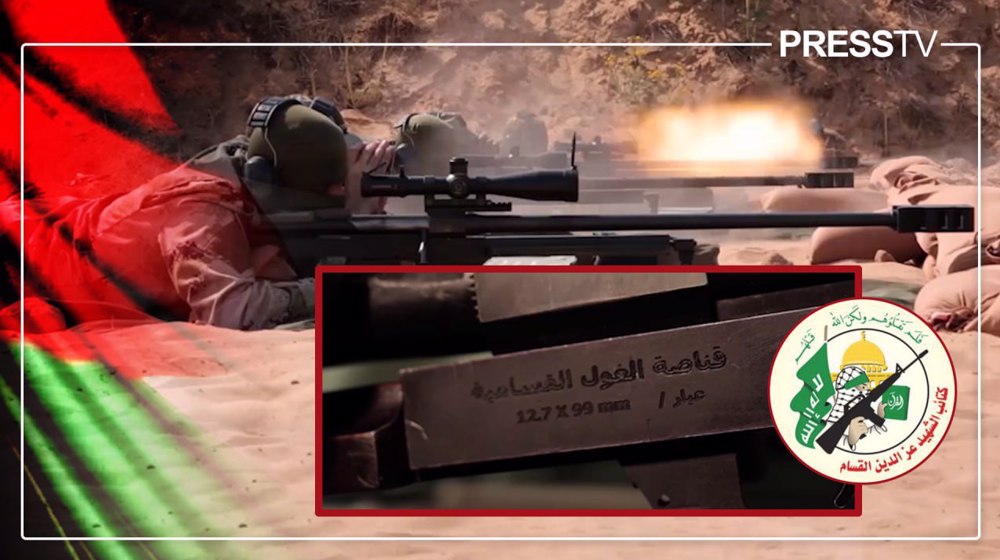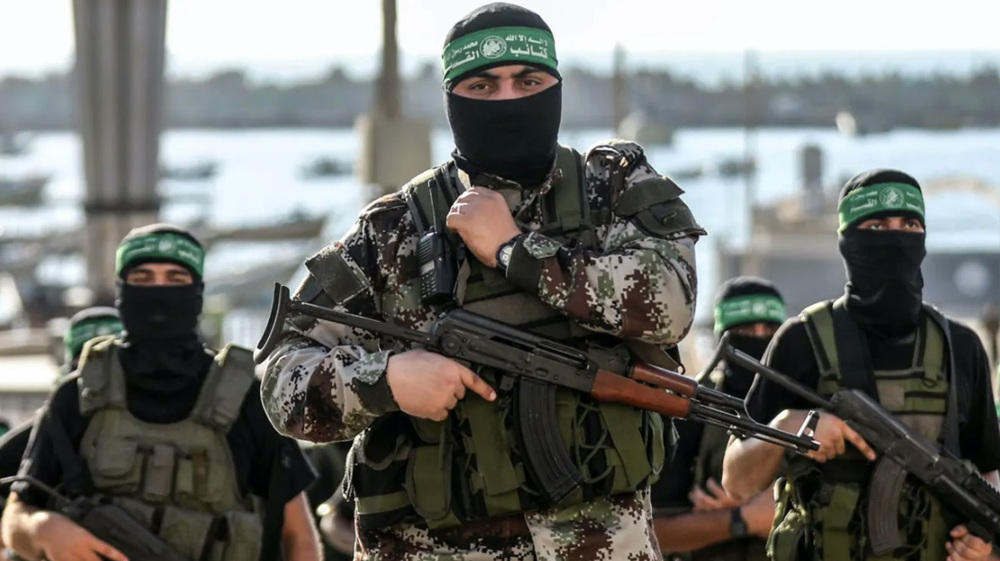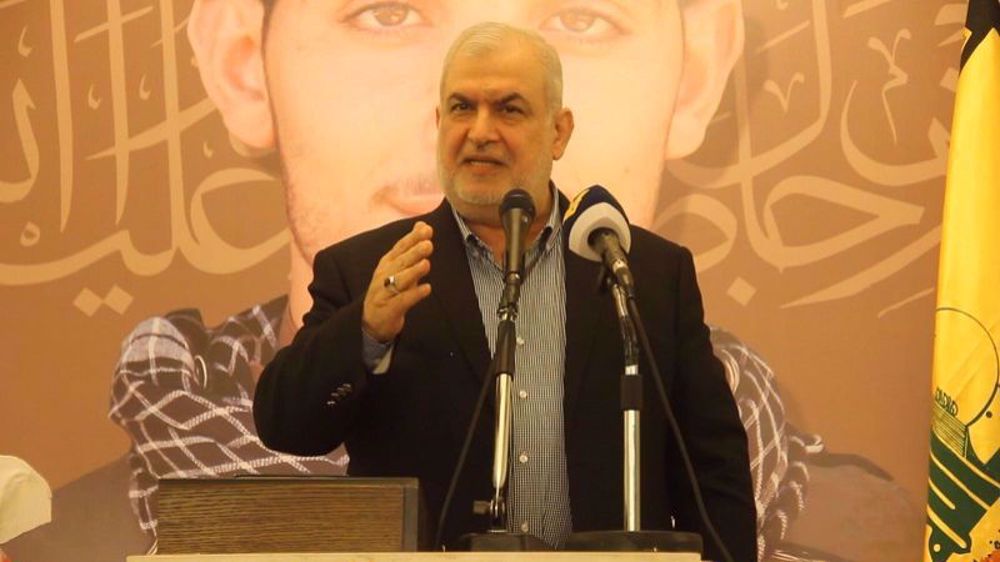What's the story behind advanced ‘Ghoul’ sniper rifle used by Hamas fighters?
By Ivan Kesic
Over the past few weeks, the Palestinian resistance movement Hamas has released many videos of Israeli soldiers being liquidated with Ghoul sniper rifles, an advanced precision weapon made in Gaza.
One of the worst nightmares for the Israeli regime's forces in the Gaza Strip is the Palestinian snipers affiliated with the Al-Qassam Brigades, the military wing of the Hamas resistance movement, who have carried out surprise attacks on occupying forces, verified on widely circulated footage.
In one such recent operation, a resistance sniper is seen operating from under cover, usually a ruin or tunnel, aiming through an opening at a zoomed-in Israeli soldier advancing in the city of Rafah.
The sniper rifle used by the Palestinian snipers in the footage is most frequently the Ghoul rifle, completely designed and manufactured by the resistance forces in the besieged Gaza Strip.
In response to those who claimed that the sniper rifle was foreign-made and smuggled into Gaza, the Hamas resistance movement in December last year released footage of the production process from a local factory in the besieged territory.
The Ghoul sniper rifle is one of the most important locally manufactured weapons, produced in the Gaza Strip, and in the possession of resistance fighters, who have inflicted heavy blows on enemy forces with it since the events of October 7.
What's the Ghoul sniper rifle?
The Ghoul rifle is an anti-materiel rifle, a type of sniper rifle of above-average caliber intended primarily for use against military equipment and hardware targets, but also widely used against well-armored personnel with bulletproof vests.
According to data released by Al-Qassam Brigades in 2014, the single-shot bolt-action rifle was manufactured to fire 14.5x114mm cartridges, significantly larger than conventional sniper rifles like the widespread Russian SVD and American M24 (both 7.62mm).
With such caliber, the Ghoul rifle is similar to Iranian Shaher and South African NTW-20 rifles, which use the same cartridges, and somewhat less powerful than the largest caliber anti-materiel rifles in usage, namely Iranian Arash (20mm) and Baher (23mm).
The Al-Qassam data showed the first version of the Ghoul rifle had an effective range of 2,000 meters, according to which it is among the best in the world. It also is among the world's longest sniper rifles.
Explainer: How did Hamas fighters ambush, kill, capture Israeli forces in Jabalia?
— Press TV 🔻 (@PressTV) May 26, 2024
By Ivan Kesichttps://t.co/ADL6YAn7ye
The newer, updated version of the Ghoul rifle, uses 12.7x99 mm rounds, similar to Iranian AM-50 Sayyad, Austrian Steyr HS, Russian KSVK, and Chinese QBU-10 rifles.
The cartridges are also locally produced, as seen in the footage, where al-Qassam fighters work on shaping and filling the rounds, to produce a final product.
The footage also showed that the new updated 12.7mm version retained its anti-material capabilities, as rounds fired at steel targets penetrated the targets and exploded upon impact.
The bullets produced came in three specifications: the first as regular rounds for training purposes, the second as incendiary rounds for igniting and exploding inflammable materials, and the third as armor-piercing rounds for targeting enemy vests and fortifications.
These bullets easily penetrate reinforced bulletproof vests and helmets, as evidenced by numerous incidents where they exploded when hit and killed the enemy on the spot.
The effectiveness of Ghoul snipers owes, in addition to technology, to the preparation of the resistance movement members, who are carefully selected for long-term, complex and demanding training.
What's its proven use and effectiveness?
The Ghoul sniper rifle made its field debut during Israel's 2014 war on the besieged Gaza Strip when the Hamas' al-Qassam Brigades revealed a sophisticated weapon they produced and showcased video clips of precise sniper operations using that weapon.
It highlighted a giant leap in the resistance movement's production capabilities, which both Israeli and Western media tried to downplay, falsely claiming it was an import or a copy of existing sniper rifles.
Since then, the Ghoul rifle has been used by the al-Qassam snipers, and numerous precise operations have been carried out with it. The military wing of the Gaza-based resistance movement has often showcased it publicly in various military parades over the past years.
The Ghoul sniper rifle has been used on many occasions since the start of Israel's genocidal war against the Gaza Strip in October last year. The war has so far killed more than 36,000 Palestinians.
Explainer: Hamas' successes on the battlefield pic.twitter.com/hVR1f2THsu
— Press TV 🔻 (@PressTV) May 18, 2024
In early December 2023, during just two days of fighting in the eastern axis of Khan Yunis city in southern Gaza, al-Qassam fighters confirmed hits on 10 Israeli occupation soldiers, including at least six in one area in the al-Rannah axis sniped by Palestinian snipers in a single operation.
At the end of the same month, al-Qassam's military media unit released a video showcasing sniper operations targeting Israeli officers using the Ghoul rifles during confrontations east of the Jabalia refugee camp in the northern Gaza Strip.
The footage titled "We craft with our hands what reaps your heads," displayed scenes of manufacturing of the Ghoul rifles, and highlighted the rigorous training operations undertaken by al-Qassam snipers.
In February, al-Qassam Brigades announced that their fighters had executed 57 successful sniper missions since October last year, including 34 with the Ghoul rifle, resulting in many enemy casualties.
In mid-March, al-Qassam released footage showing the sniping of Yitzhar Hoffman, an Israeli commander responsible for the besiegement and storming of al-Shifa Hospital in November 2023.
In May, more new Ghoul sniper hits were reported or filmed in Beit Lahia, Jabalia and Netzarim.
After whom is a sniper rifle named?
The Ghoul sniper rifle is named after the prominent al-Qassam Brigades martyr Yahya Mahmoud Jaber al-Ghoul, also known as Adnan al-Ghoul and the nickname Abu Bilal, one of the legendary Palestinian resistance military engineers.
As a 25-year-old Gazan, he joined the First Intifada in its early days and, together with comrades of the Hamas resistance movement, participated in operations against the Israeli occupation forces.
He showed engineering potential and was sent abroad for training in an unnamed country, where he gained knowledge and practical experience, after which he returned to Gaza in the early 1990s.
Hamas sets traps for Israel
— Press TV 🔻 (@PressTV) May 27, 2024
In the ongoing onslaught on Gaza, Israel's military aggression has resulted in the killing of civilians without any significant military achievements. https://t.co/wY3eqrMvoB
During the years that followed, living under direct Israeli occupation of the Gaza Strip, he was one of the key people in the military engineering department of the al-Qassam Brigades and was responsible for several innovative technological projects.
Despite the scarcity of resources and limited capabilities, al-Ghoul successfully created the first locally-made hand grenade, anti-tank missiles al-Bana, al-Battar and al-Yassin, as well as the Qassam rocket.
These weapons are responsible for the significant destruction of Israeli armor during the occupation of Gaza, and thanks to Qassam rockets, they also achieved the possibility of retaliatory strike operations.
After many years of pursuit by the military apparatuses of the occupation army, al-Ghoul was martyred in 2004 in Gaza, along with another engineer Imad Abbas, in an Israeli helicopter attack on their car.
Al-Ghoul's legacy is enormously important both during his lifetime and later as he trained a new generation of students and military engineers who improved existing Palestinian weaponry.
In accordance with the long Palestinian tradition of naming equipment after the most prominent martyrs, the resistance immortalized him by naming one of their most powerful weapons in a decade, the Ghoul sniper rifle, in his honor.

Francesca Albanese remains UN’s special rapporteur for Palestine despite pro-Israel opposition

Footage reveals aid workers killed in Gaza under Israeli fire, debunking regime’s claims

Autopsy finds teenage Palestinian died of starvation in Israeli prison
VIDEO | Mostafa, an architect turned filmmaker
VIDEO | Conflict with Turkey in Syria and Israel
Hamas, Palestine Red Crescent urge independent probe into Israel’s killing of aid workers
Columbia University laid groundwork for my abduction: Detained student
US threats contradict its calls for diplomacy, Iran open to talks on ‘equal footing’: President
Hamas says 19,000 children killed in Gaza, calls for prosecution of Israeli leaders
Lebanon calls on US to stop Israeli strikes, ceasefire violations
VIDEO | Footage reveals aid workers killed in Gaza under Israeli fire, debunking regime’s claims












 This makes it easy to access the Press TV website
This makes it easy to access the Press TV website